MDM Week: Tutankhamun, the boy pharoah, was discovered a century ago and the coin world marks the anniversary
It’s incredible to believe that a relatively minor pharoah, one that was sickly and died at under 20 years old, and one that was buried in the smallest pharoah’s tomb in the Valley of the Kings, would come to be the symbol of Ancient Egypt to the modern world. The excitement around the discovery of his tomb by Howard Carter’s expedition in 1922, was simply phenomenal. The reinvigoration of interest in the old civilisation was immedaite, and hasn’t stopped to this day.
We’re going to see plenty of coins for the 2022 issue year that mark the centenary of the tombs opening, but few will be as expansive or as well done as German producer MDM’s selection. All four of the coins here are tightly themed around that iconic golden burial mask. The smallest is a simple 1 gram shaped minigold coin that for its size, has a great stab at reproducing it, even finding room for the cartouche on the obverse.
TUTANKHAMUN PUZZLE COIN
THE MASK OF TUTANKHAMUN ENAMELLED GOLD
My favourite is the three-ounce silver. At 60 mm tall, it’s big enough to pack in the detail, and the antique finish is really clean, showing off the mask sans colour. Best of all, it has an awesome obverse, with a view of Carter’s dig site back in 1922 filling the face. The very limited three-ounce gold version, however, goes back to the Solomon Islands instead of Djibouti, and loses that obverse for the effigy of QEII. A shame. The gold does get a healthy dose of enamel, however, bringing the look much more in line with the ‘in your face, on your face’ original artifact. A pricey release, but clearly one that does the best job of showing off the subject as it is.
Lastly, we have the most innovative of the four coins, a chunky half-kilo antiqued silver beast with a set of five ‘puzzle’ pieces that sit over the reverse face and cover up the background right up to the mask itself. They’re replete with hieroglyphics, while the section of the reverse underneath them is occupied by images of many of the other artifacts found in the tomb, from the thousands uncovered.
All told, a fine range with no weak offerings, although we hope they issue more over the coming year with a look at more than just the mask. They should all be available to pre-order now.
TUTANKHAMUN
Tutankhamun (c. 1341 – c. 1323 BC), was an ancient Egyptian pharaoh who was the last of his royal family to rule during the end of the 18th Dynasty (ruled c. 1332 – 1323 BC New Kingdom) of Egyptian history. His father is believed to be the pharaoh Akhenaten, identified as the mummy found in the tomb KV55. His mother is his father’s sister, identified through DNA testing as an unknown mummy referred to as “The Younger Lady” who was found in KV35.
Tutankhamun took the throne at eight or nine years of age under the unprecedented viziership of his eventual successor, Ay, to whom he may have been related. He married his half sister Ankhesenamun. During their marriage they lost two daughters, one at 5–6 months of pregnancy and the other shortly after birth at full-term. His names—Tutankhaten and Tutankhamun—are thought to mean “Living image of Aten” and “Living image of Amun”, with Aten replaced by Amun after Akhenaten’s death.
Tutankhamun restored the Ancient Egyptian religion after its dissolution by his father, enriched and endowed the priestly orders of two important cults and began restoring old monuments damaged during the previous Amarna period. He moved his father’s remains to the Valley of the Kings as well as moving the capital from Akhetaten to Thebes. Tutankhamun was physically disabled with a deformity of his left foot along with bone necrosis that required the use of a cane, several of which were found in his tomb. He had other health issues including scoliosis and had contracted several strains of malaria.
The 1922 discovery by Howard Carter of Tutankhamun’s nearly intact tomb, in excavations funded by Lord Carnarvon,[9] received worldwide press coverage. With over 5,000 artifacts, it sparked a renewed public interest in ancient Egypt, for which Tutankhamun’s mask, now in the Egyptian Museum, remains a popular symbol. The deaths of a few involved in the discovery of Tutankhamun’s mummy have been popularly attributed to the curse of the pharaohs. He has, since the discovery of his intact tomb, been referred to colloquially as “King Tut”. Source: Wikipedia
THE MASK OF TUTANKHAMUN SILVER
THE MASK OF TUTANKHAMUN MINIGOLD
| SPECIFICATION | ||||
| COIN | MINIGOLD | SILVER 3OZ | GOLD 3oz | SILVER 1/2KG |
| DENOMINATION | $10 Solomon Islands | 200 Francs (Djibouti) | $25 Solomon Islands | 500 Francs (Djibouti) |
| COMPOSITION | 0.999 gold | 0.999 silver | 0.999 gold | 0.999 silver |
| WEIGHT | 1.0 grams | 93.3 grams | 93.3 grams | 500.0 grams |
| DIMENSIONS | 12.0 mm | 40.0 x 60.0 mm | 38.0 x 52.5 mm | 120.0 mm |
| FINISH | Proof-like | Antique | Proof-like | Antique |
| MODIFICATIONS | Shaped | High-relief, shaped | High-relief, enamel, shaped | Five puzzle pieces |
| MINTAGE | 999 | 1,922 | 62 | 500 |
| BOX / C.O.A. | Yes / Yes | Yes / Yes | Yes / Yes | Yes / Yes |


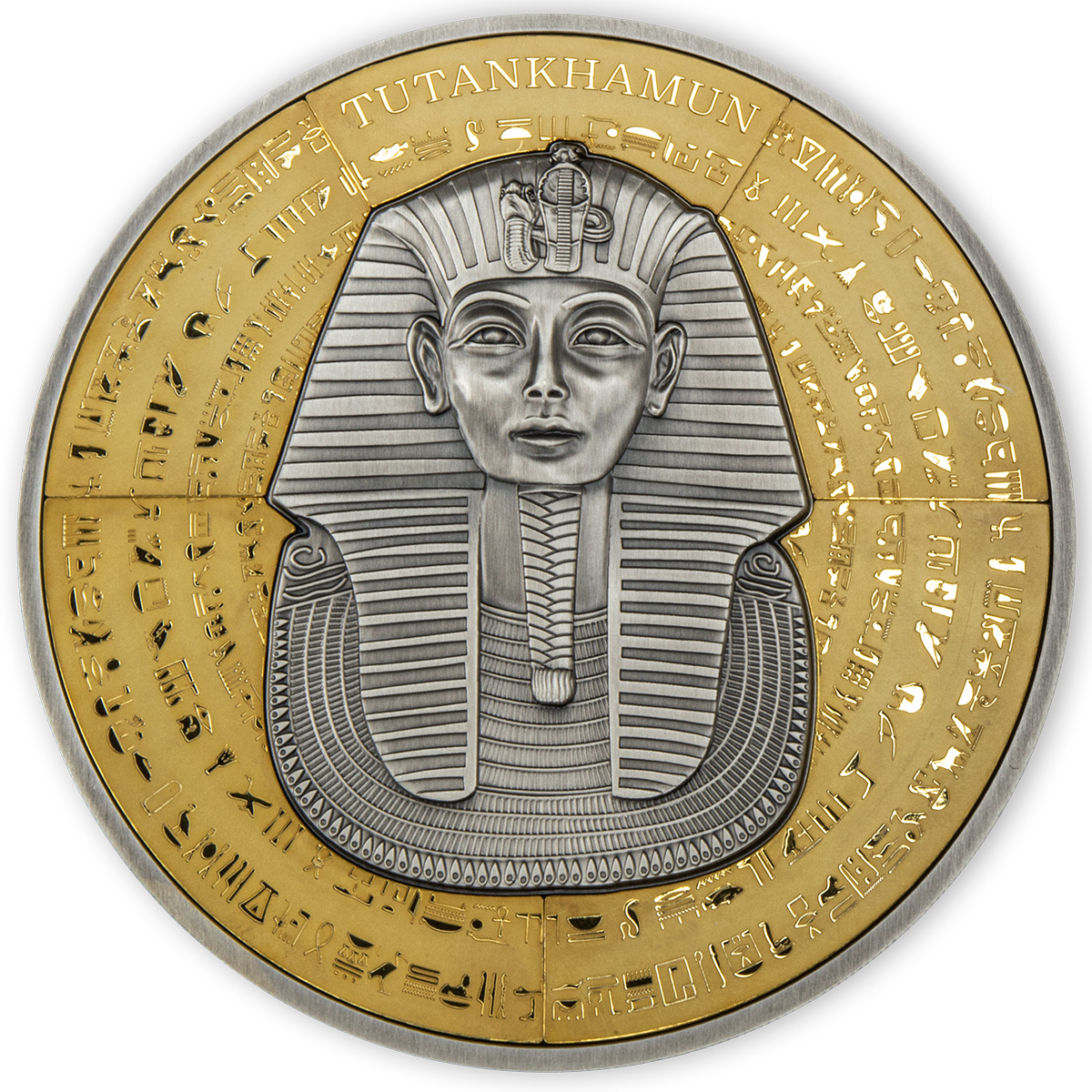
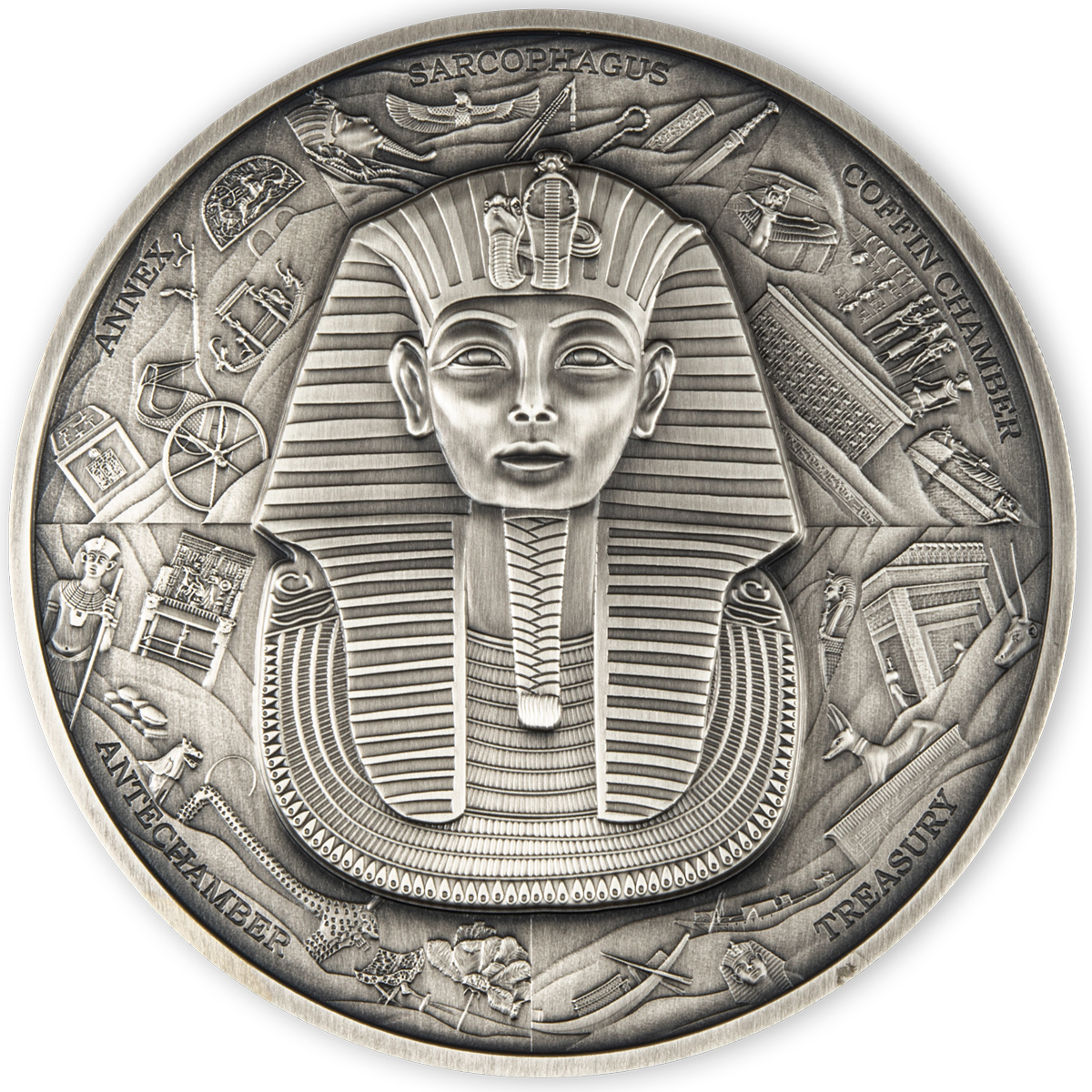
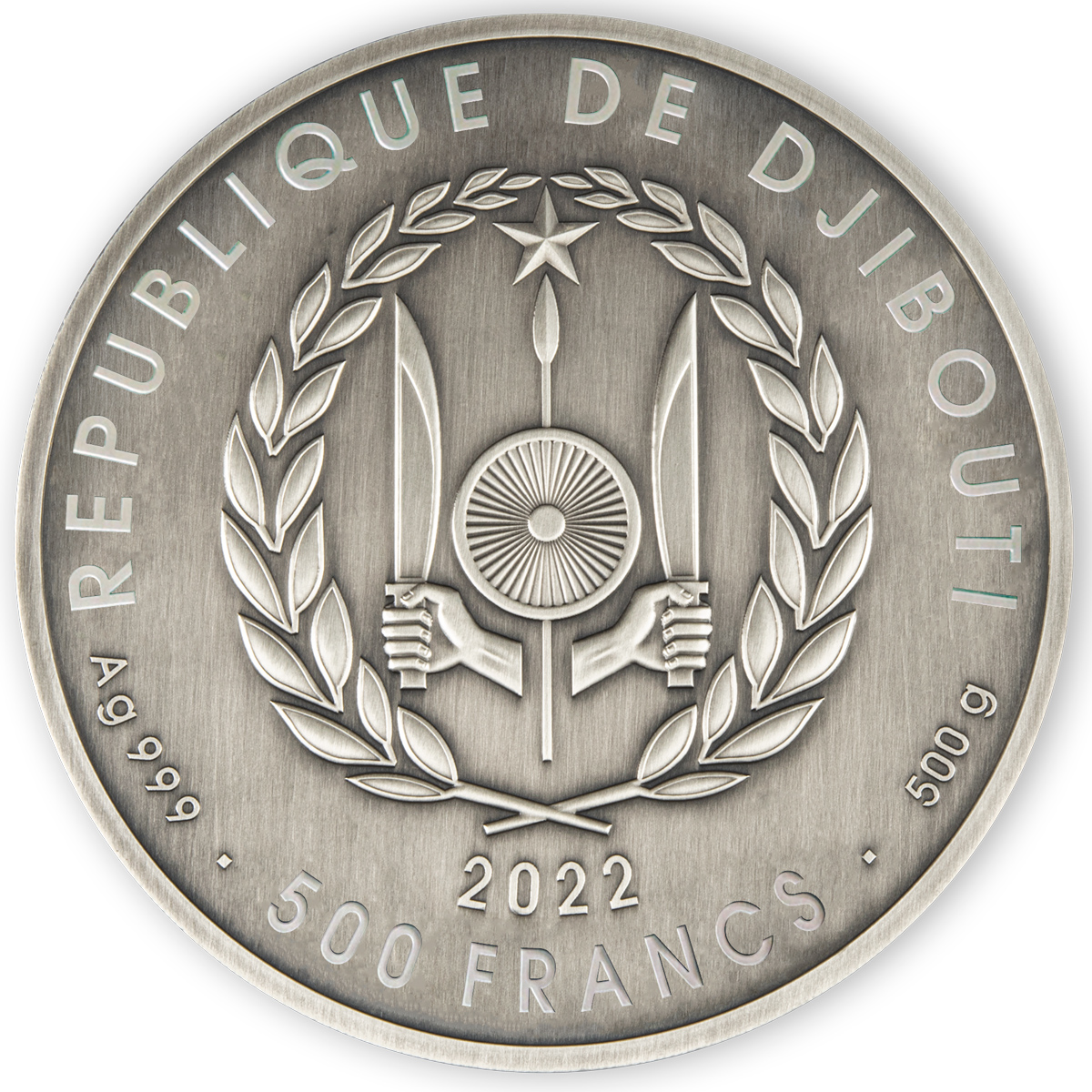
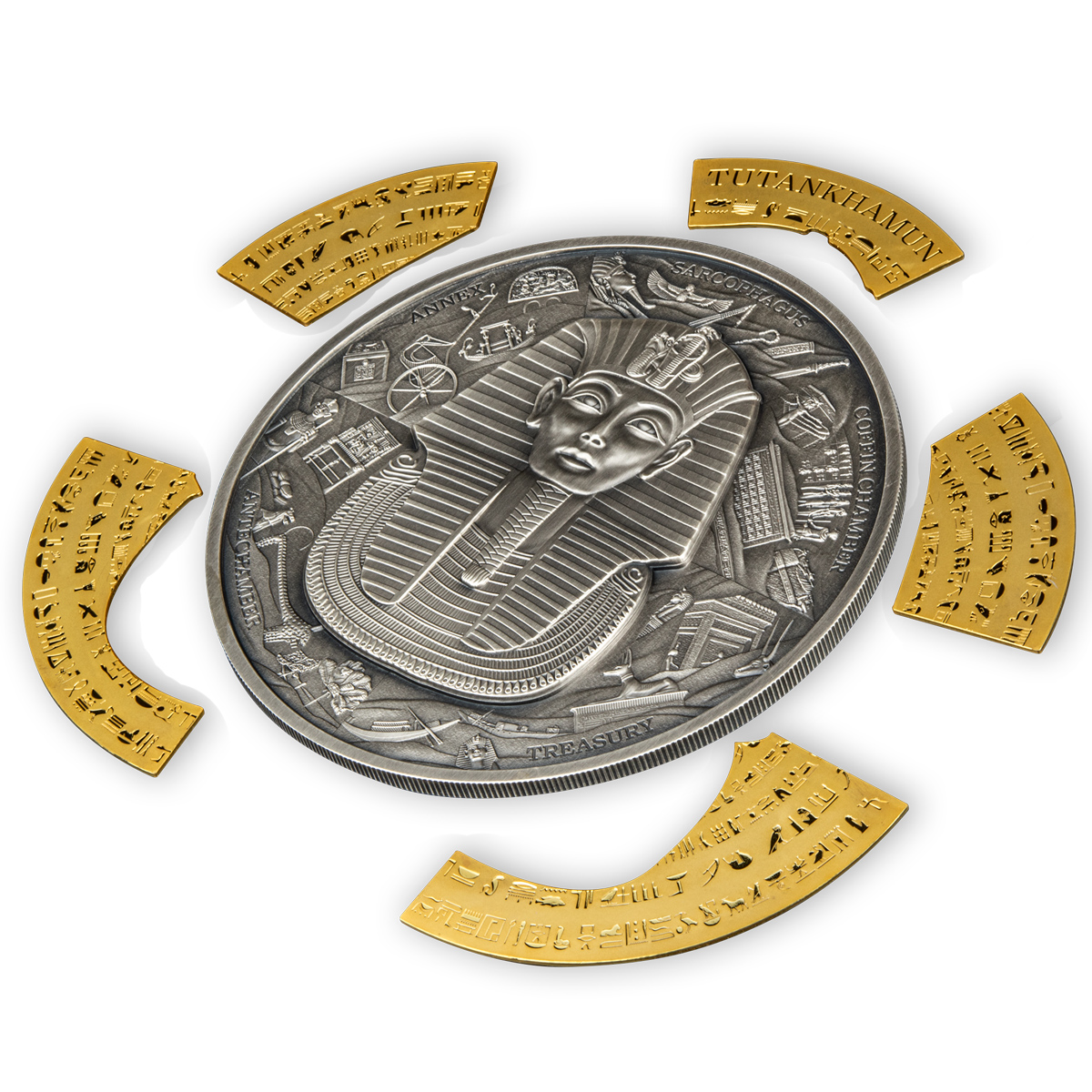

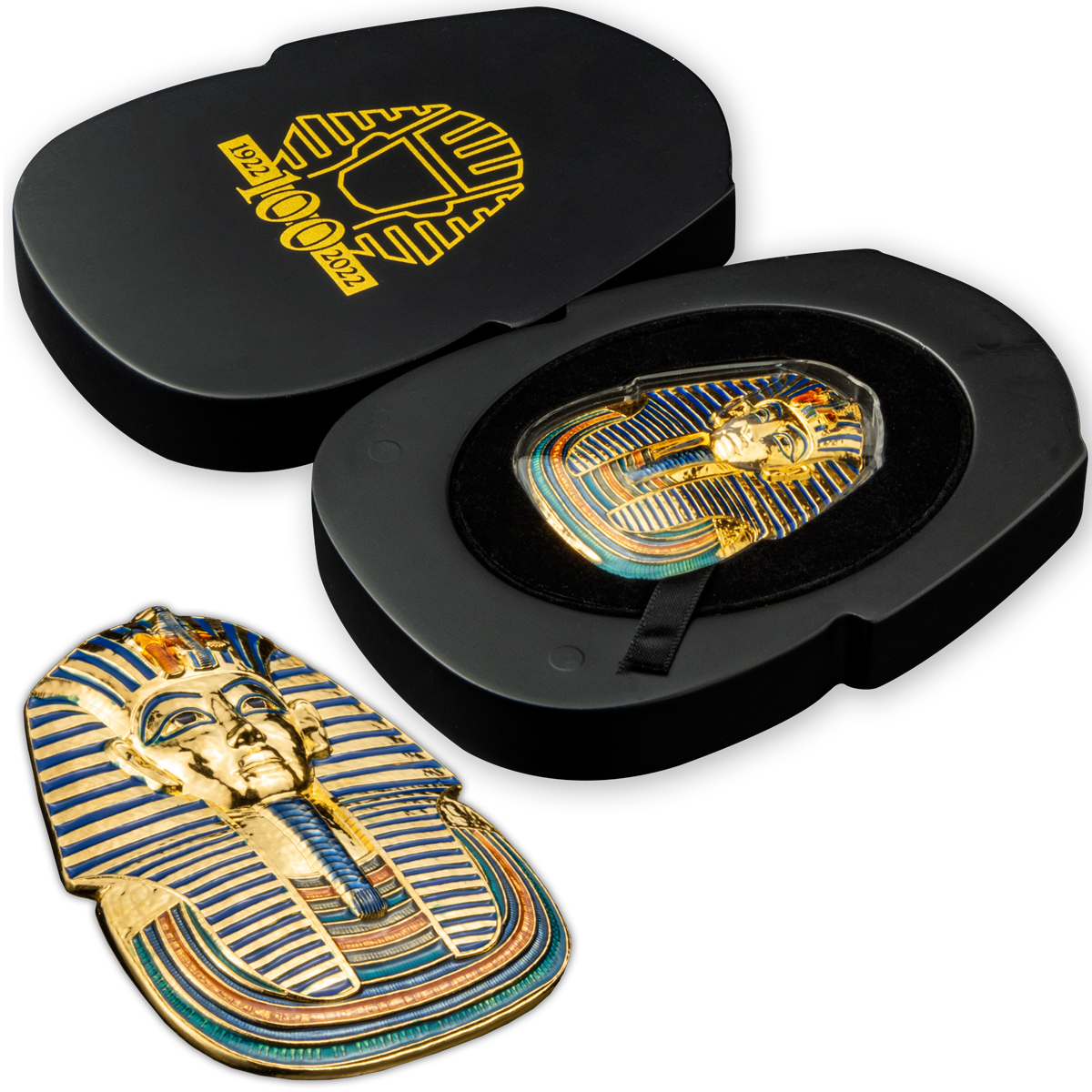


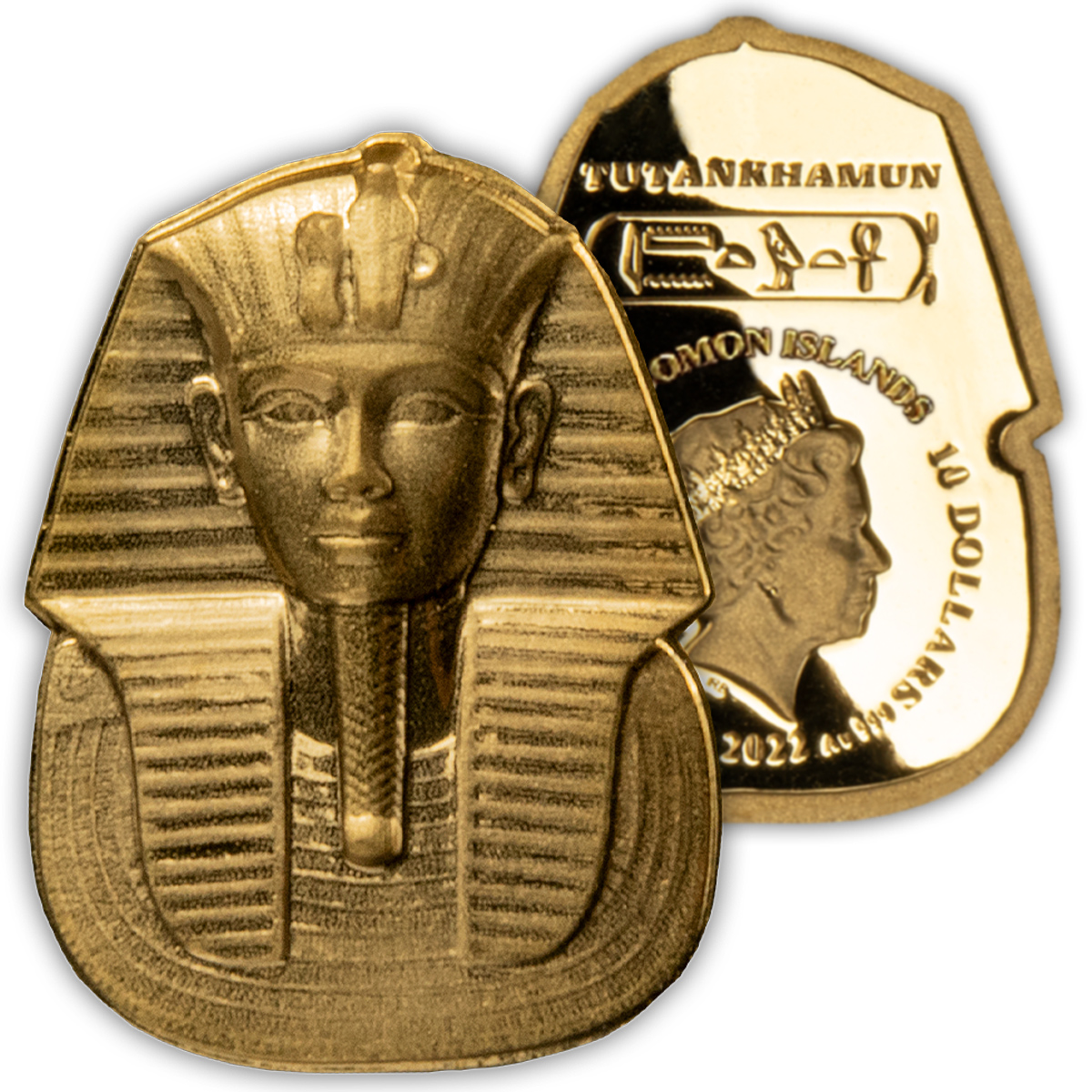

Leave A Comment